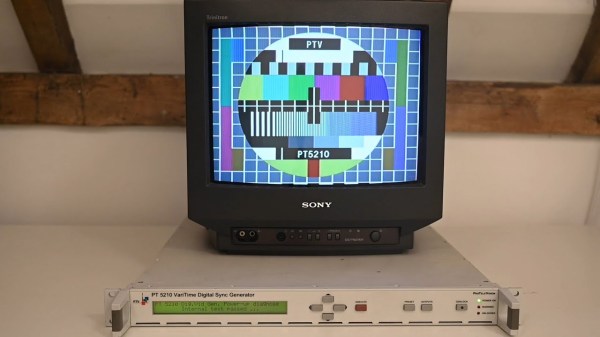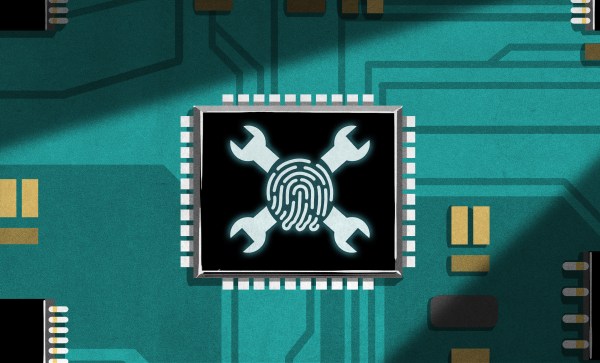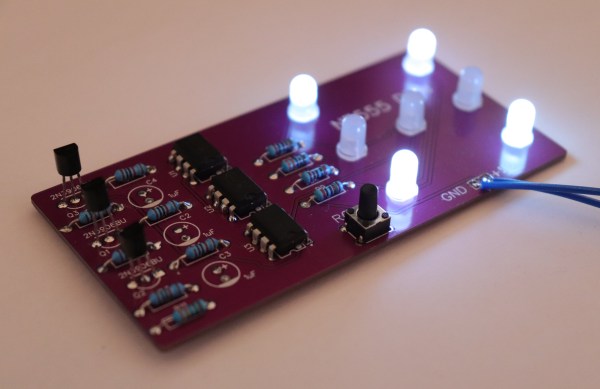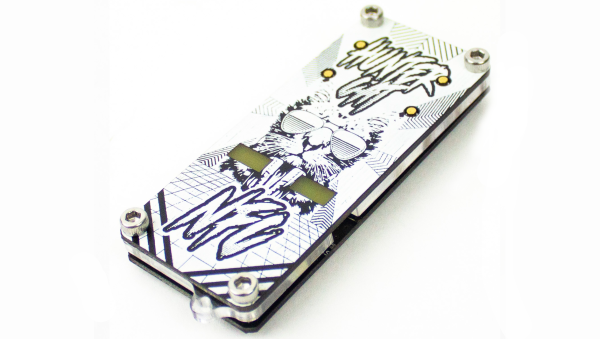While most countries have switched to digital broadcasting, and most broadcasts themselves have programming on 24/7 now, it’s hard to remember the ancient times of analog broadcasts that would eventually stop sometime late at night, displaying a test pattern instead of infomercials or reruns of an old sitcom. They were useful for various technical reasons including calibrating the analog signals. Some test patterns were simply camera feeds of physical cards, but if you wanted the most accurate and reliable test patterns you’d need a Philips pattern generator which created the pattern with hardware instead, and you can build your own now because the designs for these devices were recently open-sourced. Continue reading “Recreating An Analog TV Test Pattern”
hardware128 Articles
Embed Hardware Into 3D Prints, But Not In The Way You’re Thinking
[Christopher Helmke] is doing fantastic work in DIY systems for handling small hardware like fasteners, and that includes robotic placement of hardware into 3D prints. Usually this means dropping nuts into parts in mid-print so that the hardware is captive, but that’s not really the story here.
The really inventive part we want to highlight is the concept of reducing packaging and labor. Instead of including a zip-lock bag of a few bolts, how about embedding the bolts into a void in the 3D print, covered with a little snip-out retainer? Skip ahead to 1:54 in the video to see exactly what we mean. It’s a pretty compelling concept that we hope sparks a few ideas in others.
As clever as that concept is, the rest of the video is also worth a watch because [Christopher] shows off a DIY system that sits on top of his 3D printer and takes care of robotically placing the hardware in mid-print. He talks all about the challenges of such a system. It’s not perfect (yet), but seeing it in action is very cool.
We’ve recently seen a lot of fascinating stuff when it comes to [Christopher Helmke]’s automated handling of fasteners and similar hardware. His system makes rapid and accurate dispensing of bolts look easy, and his work on using compressed air to zip pieces around seems effective.
Continue reading “Embed Hardware Into 3D Prints, But Not In The Way You’re Thinking”
PUF Away For Hardware Fingerprinting
Despite the rigorous process controls for factories, anyone who has worked on hardware can tell you that parts may look identical but are not the same. Everything from silicon defects to microscopic variations in materials can cause profoundly head-scratching effects. Perhaps one particular unit heats up faster or locks up when executing a specific sequence of instructions and we throw our hands up, saying it’s just a fact of life. But what if instead of rejecting differences that fall outside a narrow range, we could exploit those tiny differences?
This is where physically unclonable functions (PUF) come in. A PUF is a bit of hardware that returns a value given an input, but each bit of hardware has different results despite being the same design. This often relies on silicon microstructure imperfections. Even physically uncapping the device and inspecting it, it would be incredibly difficult to reproduce the same imperfections exactly. PUFs should be like the ideal version of a fingerprint: unique and unforgeable.
Because they depend on manufacturing artifacts, there is a certain unpredictability, and deciding just what features to look at is crucial. The PUF needs to be deterministic and produce the same value for a given specific input. This means that temperature, age, power supply fluctuations, and radiation all cause variations and need to be hardened against. Several techniques such as voting, error correction, or fuzzy extraction are used but each comes with trade-offs regarding power and space requirements. Many of the fluctuations such as aging and temperature are linear or well-understood and can be easily compensated for.
Broadly speaking, there are two types of PUFs: weak and strong. Weak offers only a few responses and are focused on key generation. The key is then fed into more traditional cryptography, which means it needs to produce exactly the same output every time. Strong PUFs have exponential Challenge-Response Pairs and are used for authenticating. While strong PUFs still have some error-correcting they might be queried fifty times and it has to pass at least 95% of the queries to be considered authenticated, allowing for some error. Continue reading “PUF Away For Hardware Fingerprinting”
3D Printering: Can You Ever Have Enough Vitamins?
As a community we owe perhaps more than we realise to the RepRap project. From it we get not only a set of open-source printer designs, but that 3D printing at our level has never become dominated by proprietary manufacturers in the way that for example paper printing is. The idea of a printer that can reproduce itself has never quite been fully realised though, because of what the RepRap community refer to as “vitamins“.
These are the mass-produced parts such as nuts, bolts, screws, and other parts which a RepRap printer can’t (yet) create for itself. It’s become a convenience among some of my friends to use this term in general for small pieces of hardware, which leads me to last week. I had a freshly printed prototype of one of my projects, and my hackerspace lacked the tiny self-tapping screws necessary for me to assemble it. Where oh where, was my plaintive cry, are the vitamins!
So my hackerspace is long on woodscrews for some reason, and short on machine screws and self-tappers. And threaded inserts for that matter, but for some reason it’s got a kit of springs. I’m going to have to make an AliExpress order to fix this, so the maybe I need you lot to help me. Just what vitamins does a a lone hardware hacker or a hackerspace need? Continue reading “3D Printering: Can You Ever Have Enough Vitamins?”
NE555-Based Electronic Dice
It has become a bit of a running joke in the Hackaday community to suggest that a project could or should have been done with a 555 timer. [Tim] has rather taken this to heart with his latest Electronic Dice project, which uses three of the venerable devices.
If three seems like a lot of 555s to make an electronic die, then it may be worth considering that the last time we shared his project he was using 22 of them! Since then, [Tim] has been busy optimising his design, whilst keeping within the constraints of an old-school through-hole soldering kit.
Maybe the most surprising thing about this project is the purpose to which the NE555 devices are pressed. Rather than using them for their famous oscillation properties, they are in actual fact just being used as Schmitt Triggers to clean up the three-phase ring oscillator that is constructed from discrete transistors and passives.
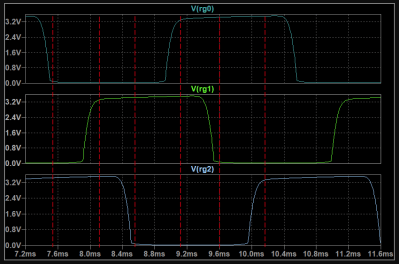
The ring oscillator cleverly produces three phase-shifted square waves such that a binary combination of the three phases offers six unique states. Six being the perfect number for a dice throw, all that then remains is to figure out which LEDs need to be switched on in which state and wire them up accordingly.
To “roll” the dice, a push-button powers up the oscillator, and stops it again when it is released, displaying the random end-state on the LEDs.
It can be fun to see what can be done using old technology, and educational to try to optimise a design down to the fewest parts possible.
[Tim]’s earlier project is here if you want to see how the design has evolved. The documentation on both of these iterations is excellent and well worth a read.
Hunt Down NFC Signals With This NFC Multi Tool
NFC hacking can be a daunting task with many specialized tools, a proliferation of protocols, and a multitude of different devices. [ElectronicCats] has done a lot of work to try to make this investigation accessible by creating an open-source, hardware-certified NFC tool called the HunterCatNFC that can read and emulate a multitude of NFC devices.
The HunterCatNFC device is meant to be portable and self contained, with LED indicator lights that can give information about the various modes, and feedback about what data is being received. At its core, the HunterCatNFC has an NXP PN7150 NFC controller chip to handle the NFC communication. The main processing controller is a Microchip SAMD21 which also provides USB functionality, and the whole device is powered by a 3.7V 150mAh Li-ion battery.
The HunterCatNFC has three main modes, ’emulation’, ‘read/write’ and ‘peer-to-peer’. Emulation mode allows the HunterCatNFC to mimic the functionality of a passive NFC device, only responding when an NFC reader issues a request. The read/write mode allows it to emulate an NFC reader or writer, with the ability to communicate with nearby passive NFC devices. The peer-to-peer mode gives the device the ability to have two way communication, for instance, between two HunterCatNFC devices.
We’ve covered NFC hacking before, including the Flipper Zero. The HunterCatNFC is a fine addition to the NFC hackers arsenal of tools with some very nice documentation to learn from. For those not wanting to send out their own boards to be printed and assembled, [ElectronicCats] has them for sale.
Video after the break!
Continue reading “Hunt Down NFC Signals With This NFC Multi Tool”
DIY Airless Tires Work Surprisingly Well
Airless tires have been “a few years away” from production for decades now. They’re one of the automotive version of vaporware (at least those meant for passenger vehicles), always on the cusp of being produced but somehow never materializing. They have a number of perks over traditional air-filled tires in that they are immune to flats and punctures, and since there aren’t any airless tires available at the local tire shop, [Driven Media] decided to make and test their own.
The tires are surprisingly inexpensive to make. A few pieces of drainage tubing of varying diameters, cut to short lengths, and then bolted together with off-the-shelf hardware is all it takes, although they note that there was a tremendous amount of hardware needed to fasten all the pipe lengths together. With the structure in place they simply cut a tread off of a traditional tire and wrapped it around each of the four assemblies, then bolted them up to their Caterham street-legal race car for testing.
While the ride quality was notoriously (and unsurprisingly) rough and bumpy, the tires perform admirably under the circumstances and survive being driven fairly aggressively on a closed-circuit race course. For such a low price and simple parts list it’s shocking that a major tire manufacturer like Michelin hasn’t figured out how to successfully bring one to a light passenger car yet.
Thanks to [Itay] for the tip!

